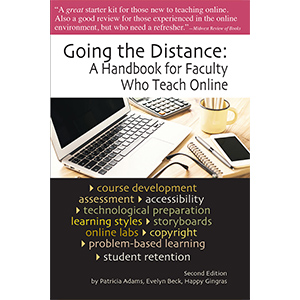Why You Should Let Students Keep Their Cameras off During Zoom Classes

by Dr. Tabitha Moses
As the 2020-21 school year gets underway – both at the K-12 and college level – many students find themselves attending online classes via Zoom or similar teleconferencing platforms.
Although sticking with remote instruction may be the correct decision from the standpoint of public health, it is not without problems.
As a researcher who studies behavior and the brain, I have found the evidence suggests that online instruction can pose a range of challenges for students if they are required to keep their cameras on during class. Here are five reasons why I believe students should be allowed to keep their cameras off instead.
1. Increased anxiety and stress
Online, students are often expected by their teachers to look at the screen for the entire class and stay focused on the video feeds of their classmates. This can result in feelings of prolonged eye contact, which can feel threatening and uncomfortable. Feeling as though everyone is watching can be distracting as students focus on how they may appear to others.
This discomfort is enhanced by the fact that the faces on the screen are often large and appear very close. This can trigger the body’s “flight or fight” response, leaving students feeling on edge and impairing their concentration.
2. ‘Zoom fatigue’
While “Zoom fatigue” may sound no different than regular fatigue, science suggests that it is different and that constant video engagement may exacerbate the problem.
Most of us learn much from nonverbal cues. The face-only format of online video still results in missing many nonverbal cues such as hand gestures, and requires people to work harder to interpret the ones they can see.
The face-only format also leads people to focus more on verbal cues, which can be tiring. When there are many faces on the screen, most people try to pay attention to all of them – a type of multitasking called continuous partial attention.
People have trouble doing this. Switching quickly between tasks can impair memory and decrease the ability to perform tasks. The multitasking required for engaging in a class with multiple active video chats is no different. These problems result in participants being less engaged and feeling drained.
3. Competing obligations
While it would be ideal for all students to sit at home in a quiet room free of distractions during online classes, this won’t always be the case. Students across all stages of education may be responsible for taking care of other family members or even their own children.
4. Right to privacy
At school, students are not required to disclose details about their personal lives to their peers, but some of this privacy is lost in video-based classrooms. To turn on video means allowing others into their home.
Many of these online platforms are not secure – as evidenced by the “Zoombombers” who have infiltrated classes, often disrupting instruction and sharing participants’ personal information. The information provided by students could be accessed by others and the content of the video could expose the location of the student’s home and with whom they live.
This concern is about more than just discomfort at others learning personal details. For some students, exposing this information can endanger their lives or their families. For example, 1 in 15 children are exposed to intimate partner violence each year and some may be fleeing abusive situations.
Additionally, there are an estimated 3.2 million undocumented children and young adults in the U.S., and many more children who live with undocumented relatives. Online video risks exposing this information to authorities.
With the development of sophisticated facial recognition software, these concerns are amplified, especially when branches of law enforcement may have access to this technology.
5. Financial means and other kinds of access
Requiring students to use video during class makes assumptions about the ability or students or their families to pay for the requisite technology. Approximately 1 in 5 students live below the federal poverty line and lack access to the technology needed for online classes – from computers or tablets to Wi-Fi.
While some public school districts have made efforts to distribute tablets and laptops to students, there are other financial burdens that need to be considered. At the start of the pandemic, about 14% of students did not have internet access.
Although internet service providers made efforts to increase access many households may not have the bandwidth required for video streaming.
Furthermore, more than 1.5 million students attending public schools or going to college experience homelessness in a given year. Students may not want to share information about their living situation with their classmates, but a requirement to use video may force them to do so since their peers might realize what’s going on when students have to connect to class from their cars or local establishments.







